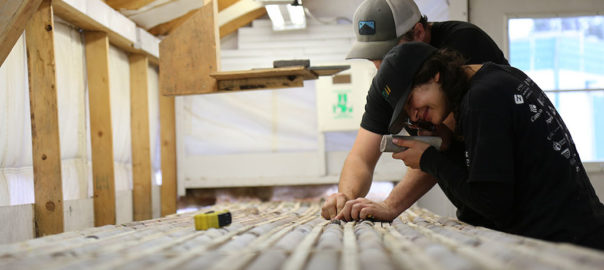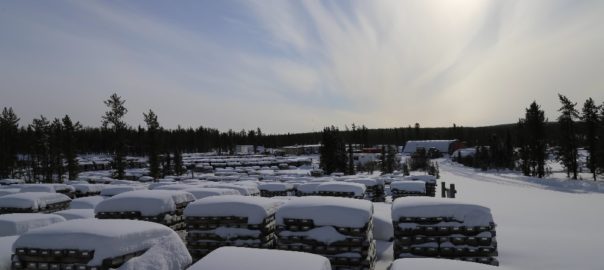Denison Mines Corp says it has selected engineering firm Wood PLC to lead and author a feasibility study for the in-situ recovery (ISR) mining operation proposed for the Phoenix uranium deposit in the Athabasca Basin of Canada, part of the Wheeler River Joint Venture (WRJV) project.
The completion of the study is, Denison says, a critical step in the progression of the project and is intended to advance de-risking efforts to the point where the company and the WRJV will be able to make a definitive development decision.
Denison has an effective 95% ownership interest in Wheeler River (90% directly, and 5% indirectly through a 50% ownership in JCU), which has combined indicated mineral resources of 132.1 MIb of U3O8 (1.8 Mt at an average grade of 3.3% U3O8), plus combined inferred mineral resources of 3 MIb of U3O8 (82,000 t at an average grade of 1.7% U3O8).
Key objectives of the study are expected to include:
- Environmental stewardship: extensive planning and technical work undertaken as part of the ongoing Environmental Assessment (EA), including applicable feedback from consultation efforts with various interested parties, is expected to be incorporated into the feasibility study project designs to support Denison’s aspiration of achieving a superior standard of environmental stewardship that meets and exceeds the anticipated environmental expectations of regulators and aligns with the interests of local Indigenous communities;
- Updated estimate of mineral resources: mineral resources for Phoenix were last estimated in 2018. Since then, additional drilling has been completed in and around the Phoenix deposit as part of various ISR field tests, including drill hole GWR-045 (22% eU3O8 over 8.6 m), and exploration drilling. The updated mineral resource estimate will form the basis for mine planning in the study;
- Mine design optimisation: feasibility study mine design is expected to reflect the decision to adopt a freeze wall configuration for containment of the ISR well field, as well as the results from multiple field test programs and extensive hydrogeological modelling exercises, which have provided various opportunities to optimise other elements of the project – including well pattern designs, permeability enhancement strategies, and both construction and production schedules;
- Processing plant optimization: feasibility study process plant design is expected to reflect the decision to increase the ISR mining uranium head-grade to 15 g/L, as well as the results from extensive metallurgical laboratory studies designed to optimize the mineral processing aspects of the project; and
- Class 3 capital cost estimate: the feasibility study is also intended to provide the level of engineering design necessary to support a Class 3 capital cost estimate (AACE international standard with an accuracy of -15% /+25%), which is expected to provide a basis to confirm the economic potential of the project highlighted in the prefeasibility study completed in 2018.
The 2018 prefeasibility study considered the potential economic merit of developing the Phoenix deposit as an ISR operation and the Gryphon deposit as a conventional underground mining operation. Taken together, the project was estimated to have mine production of 109.4 Mib of U3O8 over a 14-year mine life.
David Cates, Denison’s President & CEO, said: “The ISR de-risking activities we’ve completed since the publication of the prefeasibility study for Wheeler River in 2018 have been designed to support the completion of a future feasibility study, and the results to date have further confirmed the technical viability of the project – leading to the decision to advance the project and initiate the formal feasibility study process.
“During this de-risking phase, we have been able to verify orebody permeability and the leachability of high-grade uranium in conditions representative of an ISR mining setting. We’ve also engineered an improved containment design using a more conventional ground freezing approach. Based on the results of field programs and metallurgical lab testing completed over the last three years, we are confident that the project is ready to advance into a full feasibility study. Taken together with the selection of globally recognised engineering firm Wood, the decision to launch the formal feasibility study process for Phoenix represents another important step towards achieving our objective of bringing low-cost ISR mining to the high-grade uranium deposits of the Athabasca Basin.”








